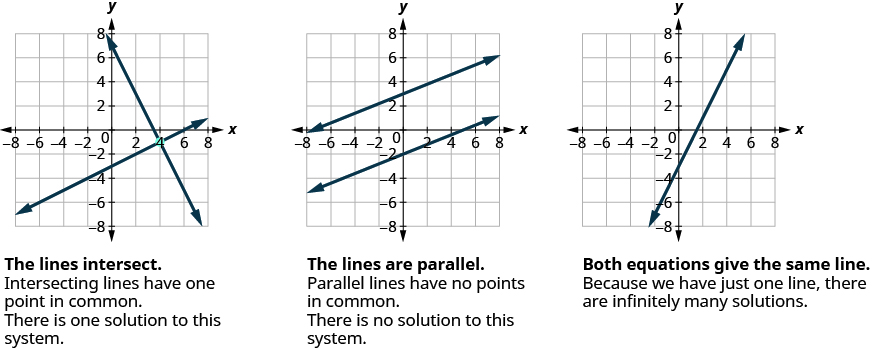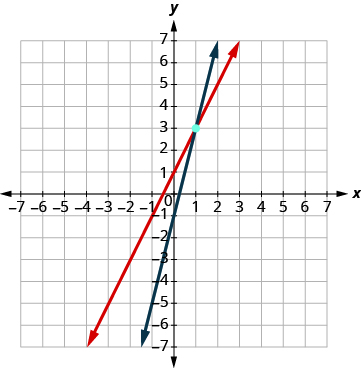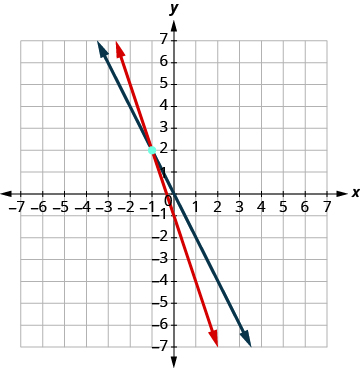| << Chapter < Page | Chapter >> Page > |
Determine whether the ordered pair is a solution to the system:
ⓐ ⓑ
ⓐ yes ⓑ no
Determine whether the ordered pair is a solution to the system:
ⓐ ⓑ
ⓐ no ⓑ yes
In this chapter we will use three methods to solve a system of linear equations. The first method we’ll use is graphing.
The graph of a linear equation is a line. Each point on the line is a solution to the equation. For a system of two equations, we will graph two lines. Then we can see all the points that are solutions to each equation. And, by finding what the lines have in common, we’ll find the solution to the system.
Most linear equations in one variable have one solution, but we saw that some equations, called contradictions, have no solutions and for other equations, called identities, all numbers are solutions.
Similarly, when we solve a system of two linear equations represented by a graph of two lines in the same plane, there are three possible cases, as shown in [link] :

For the first example of solving a system of linear equations in this section and in the next two sections, we will solve the same system of two linear equations. But we’ll use a different method in each section. After seeing the third method, you’ll decide which method was the most convenient way to solve this system.
The steps to use to solve a system of linear equations by graphing are shown below.
Solve the system by graphing:
Both of the equations in this system are in slope-intercept form, so we will use their slopes and
y -intercepts to graph them.
| Find the slope and
y -intercept of the
first equation. |
 |
| Find the slope and
y -intercept of the
first equation. |
 |
| Graph the two lines. | |
| Determine the point of intersection. | The lines intersect at (1, 3). |
 | |
| Check the solution in both equations. | |
| The solution is (1, 3). |
Both equations in [link] were given in slope–intercept form. This made it easy for us to quickly graph the lines. In the next example, we’ll first re-write the equations into slope–intercept form.
Solve the system by graphing:
We’ll solve both of these equations for
so that we can easily graph them using their slopes and
y -intercepts.
| Solve the first equation for
y .
Find the slope and y -intercept. Solve the second equation for y . Find the slope and y -intercept. |
|
| Graph the lines. |
 |
| Determine the point of intersection. | The lines intersect at (−1, 2). |
| Check the solution in both equations. | |
| The solution is (−1, 2). |

Notification Switch
Would you like to follow the 'Elementary algebra' conversation and receive update notifications?